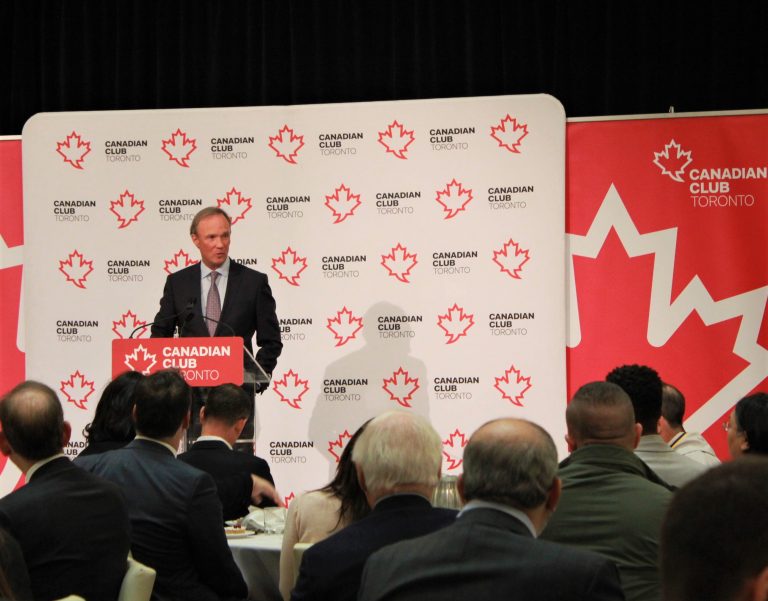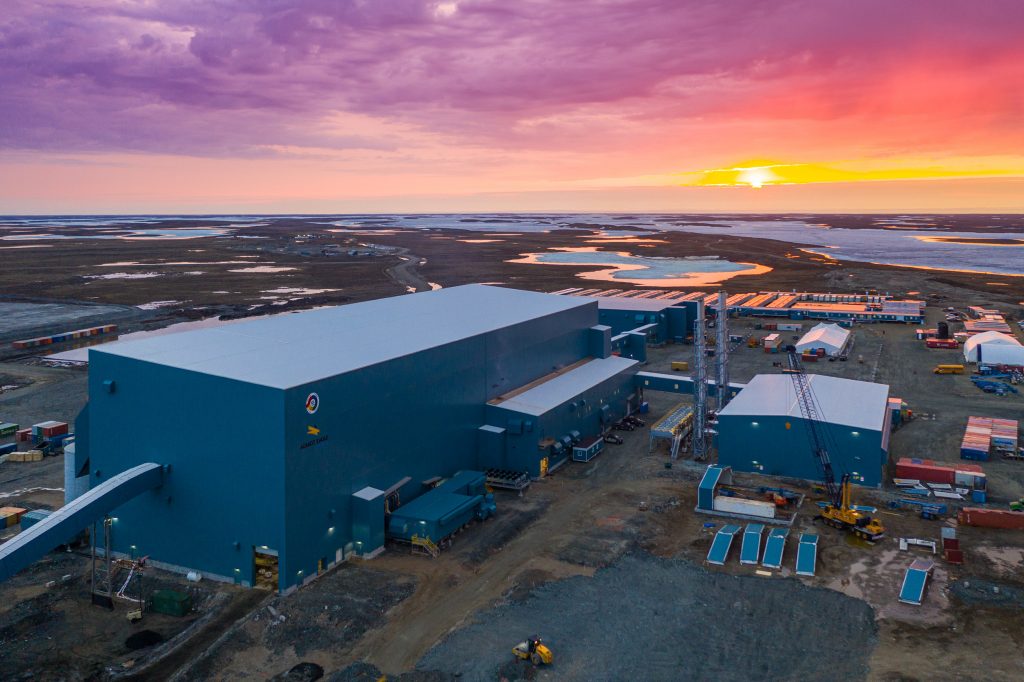Nunavut mining company calls for a Canadian Arctic strategy

On a damp day in downtown Toronto, the head Agnico Eagle Mines Ltd. told 150 people, mostly in suits, that if the federal government believes in the future of the North, it needs to show it.
“I think the federal government should be prepared to send a message that the North is important,” CEO Sean Boyd told Nunatsiaq News after his speech at the Canadian Club of Toronto, a platform for public affairs discussion.
“It’s not just important for the people that live there, but it’s important for the rest of the country in terms of being able to develop businesses that benefit all of Canada, and you have to make those investments.”
The Canadian company has two operating gold mines in Nunavut’s Kivalliq region. This is in addition to mines in Quebec, Mexico and above the Arctic Circle in Finland.

In Nunavut, Agnico Eagle is the largest private-sector contributor to the economy. By 2020, Boyd told the crowd, the company’s mines will make up 25 percent of the territory’s gross domestic product.
Agnico Eagle’s optimism is on display in a campaign launched on Nov. 19, the same day as Boyd’s speech, called We Make Mining Work. The social media push will feature images and videos from Agnico Eagle’s mines and of its employees in Nunavut.
“Having been in the industry myself for 35 years, I see we’re not doing ourselves a favor because we’re not explaining the contributions mining is making,” Boyd said.
The spotlight isn’t something Agnico Eagle has a history of seeking, but they’re doing it now, he said, to show what is possible in northern mining.
“Twenty years ago, when Nunavut was carved out of the Northwest Territories, the Inuit used geological consultants to ensure the land it selected for itself was the most promising land available from a resource perspective,” Boyd said. Through the Nunavut Agreement, Inuit are one of the largest landowners in the world with more than 2 million square kilometers in their name.
“Now is the right time for Nunavummiut to determine and govern their own future, a future that unlocks the potential of their people and their rich natural heritage,” he told the crowd.
Speaking the day before the new federal cabinet was sworn in, Boyd said that Canada needs an Arctic strategy.
That strategy would include education and training for the northern workforce and renewable, affordable energy. And it requires addressing the North’s infrastructure gap: building roads, electricity grids, broadband networks, and airport and port facilities.
Currently, Agnico Eagle is the largest road builder in the territory. At a cost of $200 million, the company has built and owns more than 200 kilometers of Nunavut road.
Citing the Mining Association of Canada, Boyd said 70 percent of the increased cost of working in the North compared to the south is due to the lack of infrastructure.
Building mines and opening new regions to development takes significant funds and Agnico Eagle’s comes largely from outside Canada. The company’s shareholder base, Boyd said, is 75 percent international, from the United States, Europe and Asia.
“These global investors are excited by the North’s potential and they are primed to invest, but they are anxious as they are getting mixed signals on Canada’s commitment to resource development,” Boyd said.
And, he underscored, that foreign investment is necessary to innovate and develop the infrastructure that is needed. But in mining investment, Boyd said Canada is losing its competitive edge without more federal government support.
“When we’re making that decision on where to go, it’s kind of nice if you know you’ve got a federal government that’s investing in infrastructure at the same time, because they believe in the future of that region,” he said. “If you know that they’re doing that, then you feel more confident in making the billion-dollar decision to build that business.”
Nunavut, like the rest of Canada, he said, wants to build a strong, diversified economy not solely reliant on natural resources. But from his experience working with the Government of Nunavut, Boyd said they also recognize the significant opportunity in mining: government revenue, spinoff businesses, training and education.
“Canada’s Arctic is under pressure and we all need to work together to defend it, to help the people of the North strengthen our sovereignty, to help them build the kind of economic future they want, and to do it in a way that protects the environment,” he said.
And you can, he said, do both.